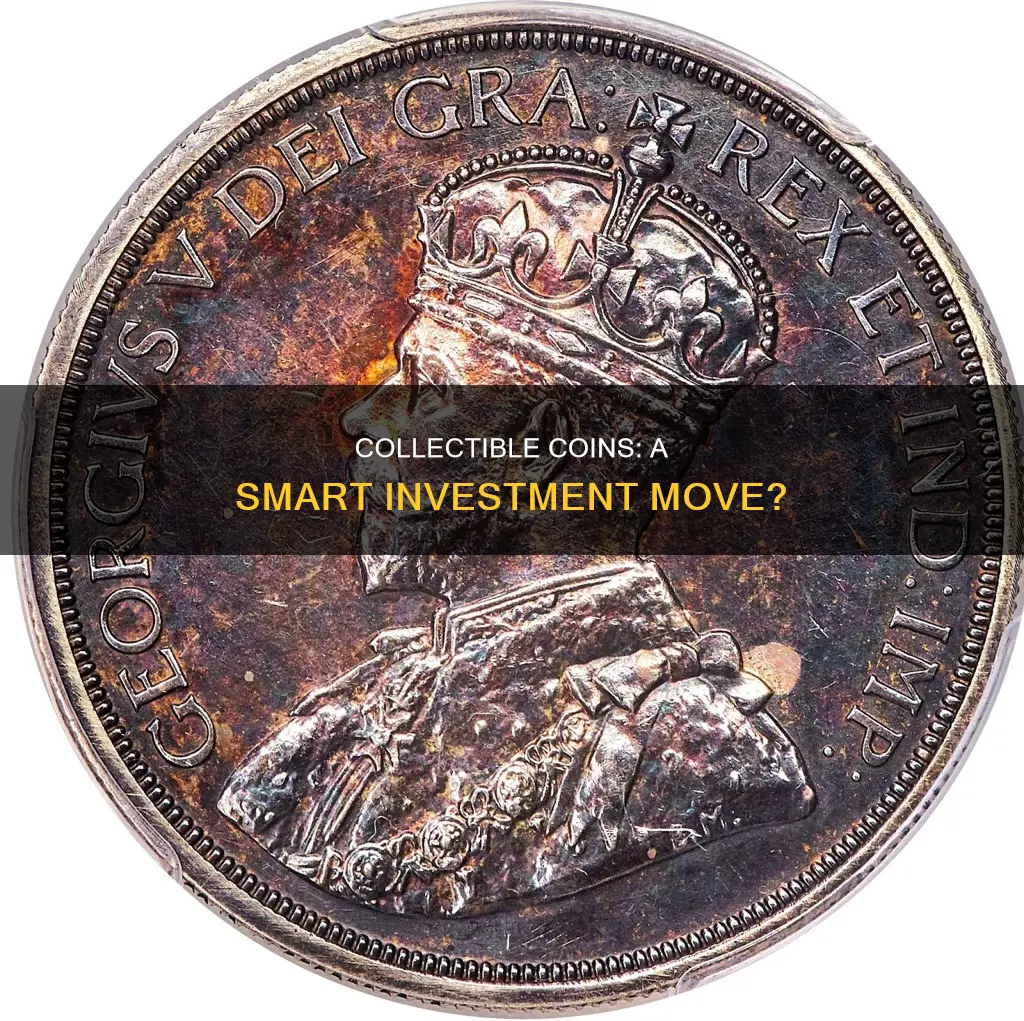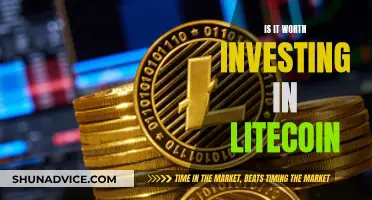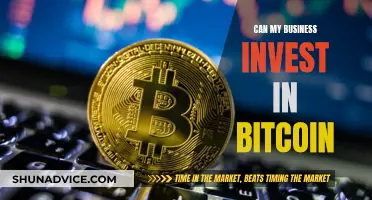
Collecting coins can be a fun hobby and a great way to own a piece of history. But are collectible coins a good investment? The answer is not so straightforward. While some rare coins have seen significant increases in value, the collectible coin market has a darker side, with misleading sales pitches and subjective valuations that can leave investors vulnerable to losses.
On the one hand, certain rare and ancient coins, particularly those with historical significance, can be highly valued by collectors and may increase in value over time. Factors such as age, rarity, metal content, and purity can contribute to a coin's potential as an investment piece.
On the other hand, the value of collectible coins is largely subjective and based on factors like rarity, condition, historical significance, and demand, which different people may value differently. This subjectivity, coupled with high markups and aggressive sales tactics, has led to many novice investors losing money, even when the price of gold has risen.
Additionally, the small market for collectible coins means that finding a buyer can be challenging, and investors may get underpaid when it comes time to sell.
So, while there is potential for profit in the collectible coin market, it is crucial for investors to thoroughly research the coins, the dealers, and the market before making any purchases.
| Characteristics | Values |
|---|---|
| Age | The older the coin, the more valuable it is. |
| Rarity | The rarer the coin, the more valuable it is. |
| Metal Amount and Purity | Coins with a higher amount of precious metals are more valuable. |
| Authentication | Trusting the authentication of the coin is important. |
| Market Value | Coins might not rise in value over time. |
| Subjectivity | The value of a rare coin is largely subjective. |
| Demand | If there is no demand for the coin, its price won't rise. |
| Selling | It can be tricky to sell a rare coin. |
| Investment | Most investors should avoid the risks of numismatic coins and buy bullion coins instead. |
What You'll Learn

Beware of misleading sales pitches
When it comes to collectible coins, it's important to be cautious of misleading sales pitches and scams. Here are some common pitfalls to watch out for:
High-Pressure Sales Tactics
Some scammers use high-pressure and aggressive sales tactics to misrepresent coin values and persuade consumers to make impulse purchases. They may try to convince you that their coins are a better deal or a rare investment opportunity. It's important to do your research and not give in to pressure to buy immediately.
Targeting Elderly or Vulnerable Individuals
Gold fraud scam artists often target the elderly or vulnerable individuals, using scare tactics and deceptive sales pitches to convince them to invest their retirement funds or savings in overpriced or counterfeit coins. They may pose as friendly figures or use misleading titles to gain trust.
Misrepresenting Investment Risk and Value
Salespeople may mislead consumers about the investment risk and true value of the coins they are selling. They may mark up the prices of the coins by several hundred per cent, claiming they are rare or have a higher value than they actually do. It's important to get an independent valuation or seek advice from a reputable source before making a purchase.
Fake or Overpriced Coins
Some sellers may offer fake or overpriced coins, especially on online platforms like Etsy or eBay. Be cautious of abnormally high or low prices, and always verify the authenticity and value of a coin before purchasing.
Misleading Advertisements
Some companies use misleading advertisements to promote their coins, implying that they contain precious metals or have a higher value than they actually do. For example, the National Collector's Mint has been warned by the United States Mint for its misleading advertisements about the precious metal content in its "Freedom Tower" coins.
Modified or Damaged Coins
Be wary of modified coins, such as those with added holographic stickers or colouring. While these alterations may seem appealing, coin collectors and numismatists consider them damaged, and they will likely only fetch bullion value when you try to sell them.
Unnecessary Add-Ons and Fancy Packaging
Some dealers assemble ordinary coins into fancy cases or sets and sell them for much higher than their true value. Don't be fooled by fancy packaging or the promise of a "complete" set. Focus on the value of the individual coins themselves.
In conclusion, while collecting coins can be a fascinating hobby and a potentially lucrative investment, it's important to be cautious and informed to avoid falling prey to misleading sales pitches and scams. Always do your research, seek independent valuations, and buy from reputable dealers to protect yourself.
Retirement Planning: Investing Your 401k in Bitcoin
You may want to see also

Understand the different types of purchasable coins
There are three main types of purchasable coins: numismatic coins, bullion coins, and collectors' or commemorative coins.
Numismatic coins are rare, often old, and usually originally minted for circulation rather than for collectors. They are collected by coin specialists (known as 'numismatists'). The value of a numismatic coin is largely subjective and is based on rarity, condition, historical significance, and demand. While it is possible to make money from them, numismatists generally discourage buying them as an investment due to the high risk of overpaying.
Bullion coins, on the other hand, are a straightforward way of investing in gold. They are not considered collectible and can be bought at a margin of 3% to 5% over the value of the gold they contain. Their value is based on the spot price of gold rather than rarity or demand, making them a more consistent investment choice.
Collectors' or commemorative coins occupy a middle ground between numismatic and bullion coins. They can be solid gold or silver, gold-plated, or base metal, and are often sold by the Royal Mint and other private companies. While some sought-after collectors' coins can achieve prices far above their metal value, many do not, and they should not be viewed as a primary investment vehicle.
When considering purchasing coins, it is essential to do thorough research and understand the risks involved. The value of coins can be highly subjective, and it can be challenging to find a buyer willing to pay the desired price. Additionally, there is a risk of encountering misleading sales pitches and fraudulent dealers.
Dogecoin Investment Strategies: How to Invest Wisely
You may want to see also

Consider the age of the coin
The age of a coin is a key factor in determining its value. Generally, the older the coin, the more valuable it is. This is due to a combination of factors, including the historical value and the metals used to create them.
Coins from earlier historical eras, such as ancient Roman coins or those from Ancient Persia or Macedonia, tend to be more valuable than newer coins. This is because they are rarer and may be made from precious metals. For example, U.S. pennies minted before 1983 are mostly made of copper, while newer pennies are made of zinc and are less valuable to collectors.
Additionally, the historical significance of a coin can also impact its value. For instance, an 1839 Queen Victoria 'Proof' boxed set of 15 gold, silver, and copper coins sold for £504,000. The high price was due to the coins being uncirculated and of the highest quality.
It's worth noting that the age of a coin doesn't always guarantee its value. Some modern coins can be quite valuable due to rarity or mistakes in the minting process. For example, a batch of 20p coins minted in 2008 with the date missing is now worth more than £70 each.
Therefore, when considering the age of a coin, it's important to research the specific coin, its history, and the market demand for similar coins to determine its potential value as an investment.
Invest in Bitcoin: Avoid Startup Fees and Get Started
You may want to see also

Evaluate the rarity of the coin
When evaluating the rarity of a coin, several factors come into play. Here are some key considerations:
Mintage and Scarcity
Mintage refers to the total quantity of coins produced for a specific date and mint. A coin's rarity is inversely proportional to its mintage; the lower the mintage, the rarer the coin. Some sources suggest that a mintage of less than 100 is considered particularly rare, while a mintage between 1,000 and 10,000 is still considered rare.
However, it's not just about the initial mintage but also the number of surviving coins. Over time, coins may be lost, destroyed, or damaged, reducing their numbers. Therefore, the current population or survival rate of a particular coin can significantly impact its rarity.
Demand and Collectability
The demand for a specific coin among collectors can also influence its rarity. High demand for a particular coin, regardless of its mintage, can make it rarer and more valuable. Additionally, the collectability of a series or type of coin can ebb and flow, with the sale of a prominent collection sometimes spurring a renaissance for that series, leading to higher prices.
Condition and Eye Appeal
The condition of a coin is crucial in determining its rarity. A coin in pristine or exceptional condition is rarer and more desirable than a heavily worn or circulated one. The "conditional rarity" of a coin is assessed by comparing its condition to the entire graded population of that particular coin.
The eye appeal of a coin, which includes its overall appearance, luster, colour, and surface quality, can also impact its rarity. Coins with original, unadulterated surfaces often bring higher prices than similar pieces that have been altered or over-processed.
Mint Marks and Dates
Mint marks and dates can be distinguishing features that separate common coins from rare ones. The date on a coin indicates when it was minted, providing context about its age and historical significance. Certain dates, known as "key dates," may have lower mintages, making them harder to find in good condition.
Mint marks reveal which mint facility produced the coin, and the same date and design can have multiple varieties if minted at different locations in the same year. These small differences can create significant value disparities between various coin varieties.
Historical and Cultural Significance
A coin's historical context can elevate its rarity status. Coins associated with significant events or commemorating important people or places may be rarer and more valuable due to their cultural significance.
Precious Metal Content
For older coin series, the precious metal content can be a factor in rarity. Lower mintages of precious metals, combined with the intrinsic bullion value of the coin's weight, can drive up prices for these rarities.
Grading and Survival Ratings
The Sheldon Scale grading system, ranging from 1 to 70, is commonly used to evaluate the condition of a coin. Higher grades on this scale indicate better condition, increasing a coin's rarity. Additionally, survival ratings, such as the PCGS CoinFacts Rarity Scale™, provide a numerical approach to assessing rarity by estimating the number of surviving specimens.
Borrowing to Buy Bitcoin: Getting a Loan to Invest
You may want to see also

Assess the amount and purity of the metal in the coin
When it comes to investing in collectible coins, it's important to assess the amount and purity of the metal in the coin to determine its value and authenticity. Here are some methods to help you evaluate the purity of a coin:
Hallmark Check:
In most countries, hallmarks are legally required for precious metal items. Look for small stamps or marks imprinted on the coin by the mint, indicating its purity and authenticity. For example, in the United States, stamps like "999" or "24K" indicate 99.9% purity (24 karats), while "585" represents 58.5% purity (14 karats).
Magnet Test:
Pure gold is not magnetic, so a simple test is to use a magnet. If the coin is attracted to the magnet, it suggests the presence of other magnetic materials or metals, indicating potential impurities. However, this test does not provide a definitive measure of purity and should be followed up with more accurate methods.
Density Test:
This test involves measuring the coin's density and comparing it to the known density of pure gold. It is a highly accurate method used by professionals, who use precision scales and displacement fluids to detect any non-gold elements in the coin.
Acid or Scratch Test:
This test involves scratching the coin's surface and applying different acids with varying concentrations. Each type of gold will react differently, leaving distinctive marks or colours on the scratch. For example, 10K gold will show a light green colour, while 14K gold will show a faint brown colour. However, pure 24K gold will not react to any acid. This test should be conducted with caution as it damages the coin's surface.
X-Ray Fluorescence (XRF) Test:
XRF is a non-destructive method that uses X-rays to analyze the coin's composition without damaging it. It provides a highly accurate assessment of the coin's purity and elemental composition, making it a valuable tool for experts to assess the coin's value and authenticity.
Fire Assay (Cupellation):
Fire Assay is one of the oldest methods to determine gold purity. It involves melting the gold coin in a controlled environment to separate impurities and non-gold metals. While this method is highly accurate, it can be expensive and time-consuming, so it is usually performed by specialized laboratories rather than individual coin owners.
Ultrasound Test:
The ultrasound test is another non-destructive method that uses high-frequency sound waves to determine the density of a gold coin. It detects inconsistencies in density caused by impurities, providing valuable insights into the coin's purity without altering its physical state.
It is important to note that the value of a collectible coin is not solely determined by its metal content. Other factors, such as rarity, historical significance, and condition, also play a crucial role in assessing the overall value of a collectible coin.
How Teens Can Invest in Bitcoin
You may want to see also
Frequently asked questions
Collectible coins can be a good investment if you know what you are doing. The value of a rare coin is largely subjective and based on rarity, condition, historical significance, and demand. If you are a novice investor, you are likely to overpay for a coin that might not increase in value.
The age, rarity, and metal amount of a coin are some of the factors that determine its value. Coins from earlier historical eras are generally more valuable than modern coins, and the harder a coin is to find, the more valuable it is. Additionally, coins with a higher amount of precious metals, such as gold and silver, tend to be worth more.
One of the main risks is overpaying for a coin that does not increase in value. The markup on collectible coins can be high, and it can be challenging to find a buyer willing to pay a high price for your coin when you want to sell. Another risk is being scammed or misled by dealers who use bait-and-switch tactics or make misleading claims about the investment potential of certain coins.
It is important to do your research before purchasing any collectible coins. Educate yourself about the market, the different types of coins, and the reputation of the dealer you are buying from. Buy from reputable dealers, and avoid making impulse purchases from TV shopping networks or dealers who use high-pressure sales tactics.







